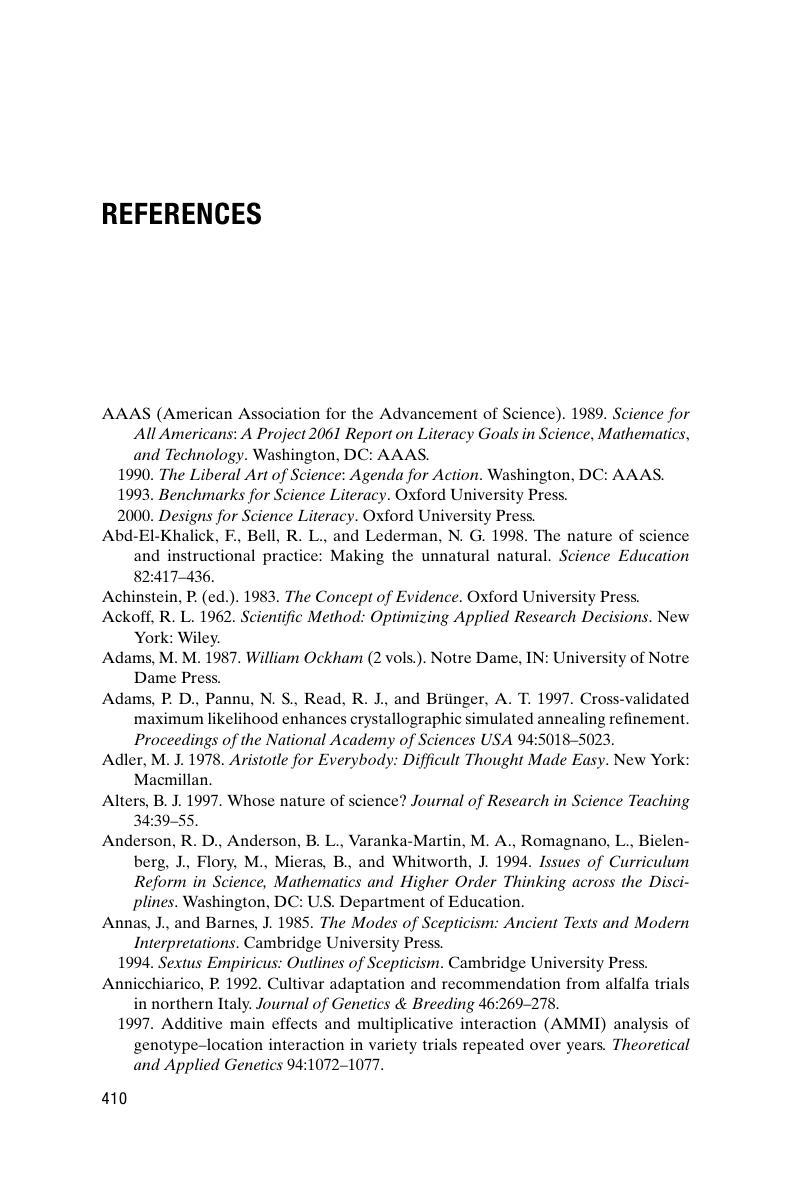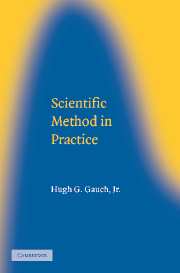Book contents
- Frontmatter
- Contents
- Foreword
- Preface
- 1 INTRODUCTION
- 2 SCIENCE IN PERSPECTIVE
- 3 SCIENCE WARS
- 4 SCIENCE'S PRESUPPOSITIONS
- 5 DEDUCTIVE LOGIC
- 6 PROBABILITY
- 7 INDUCTIVE LOGIC AND STATISTICS
- 8 PARSIMONY AND EFFICIENCY
- 9 CASE STUDIES
- 10 SCIENCE'S POWERS AND LIMITS
- 11 SCIENCE EDUCATION
- 12 CONCLUSIONS
- References
- Index
- References
References
Published online by Cambridge University Press: 05 March 2015
- Frontmatter
- Contents
- Foreword
- Preface
- 1 INTRODUCTION
- 2 SCIENCE IN PERSPECTIVE
- 3 SCIENCE WARS
- 4 SCIENCE'S PRESUPPOSITIONS
- 5 DEDUCTIVE LOGIC
- 6 PROBABILITY
- 7 INDUCTIVE LOGIC AND STATISTICS
- 8 PARSIMONY AND EFFICIENCY
- 9 CASE STUDIES
- 10 SCIENCE'S POWERS AND LIMITS
- 11 SCIENCE EDUCATION
- 12 CONCLUSIONS
- References
- Index
- References
Summary

Information
- Type
- Chapter
- Information
- Scientific Method in Practice , pp. 410 - 430Publisher: Cambridge University PressPrint publication year: 2002
